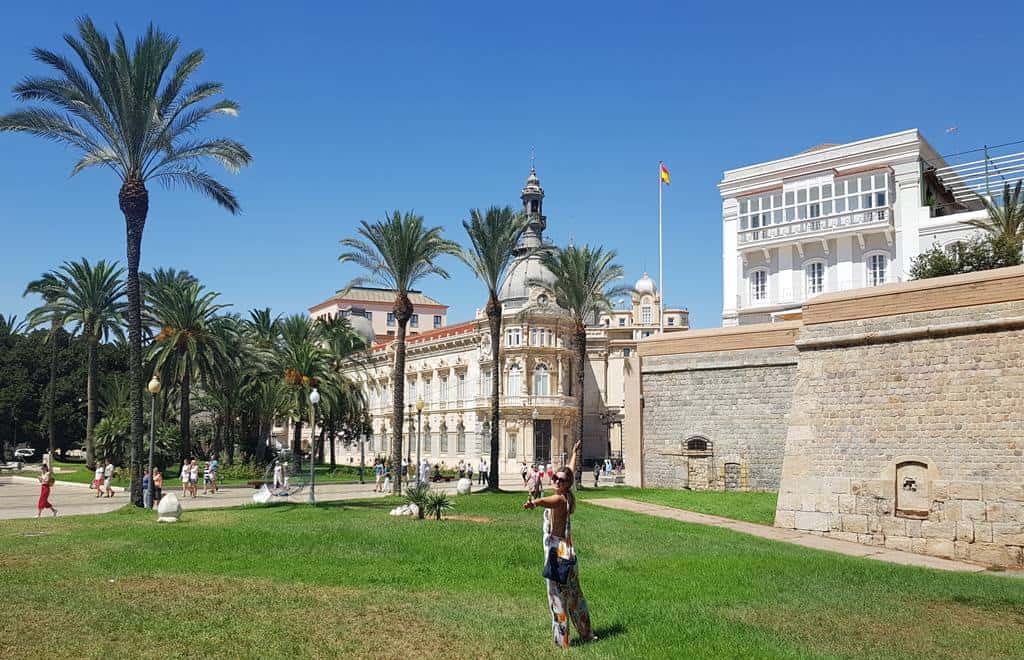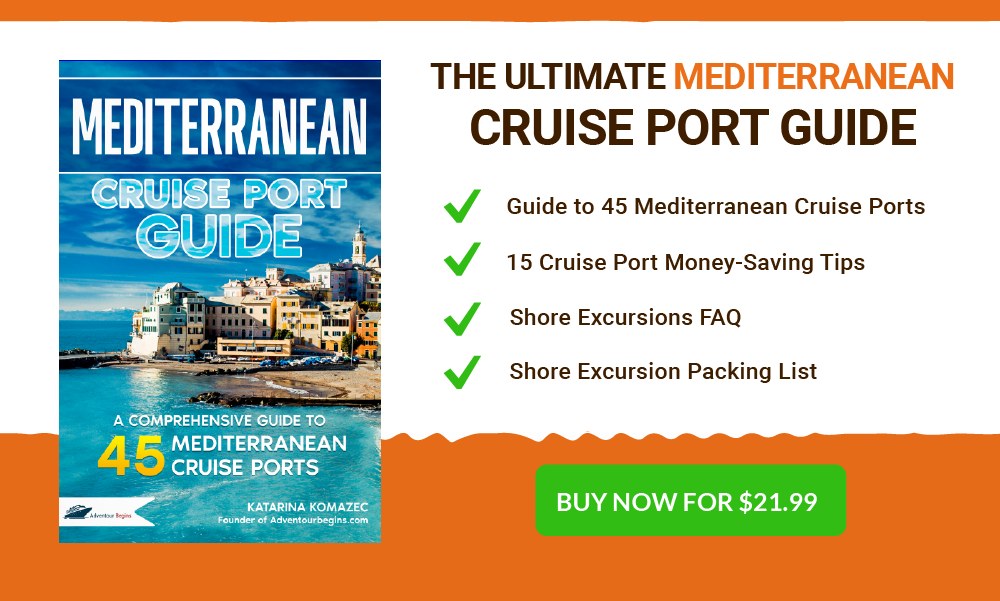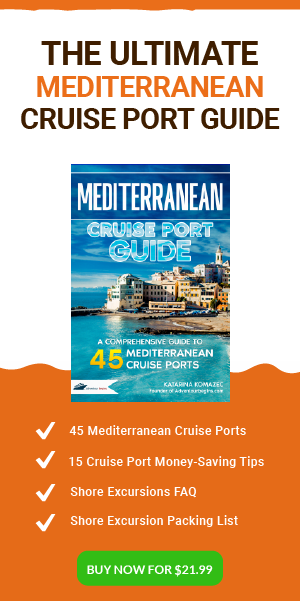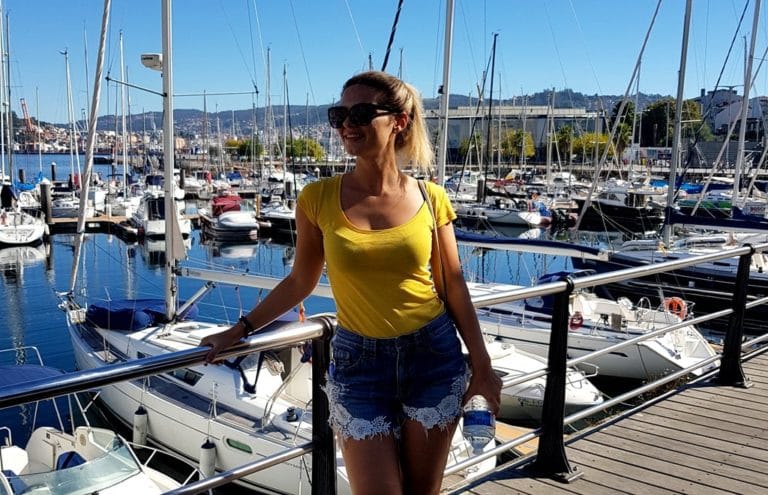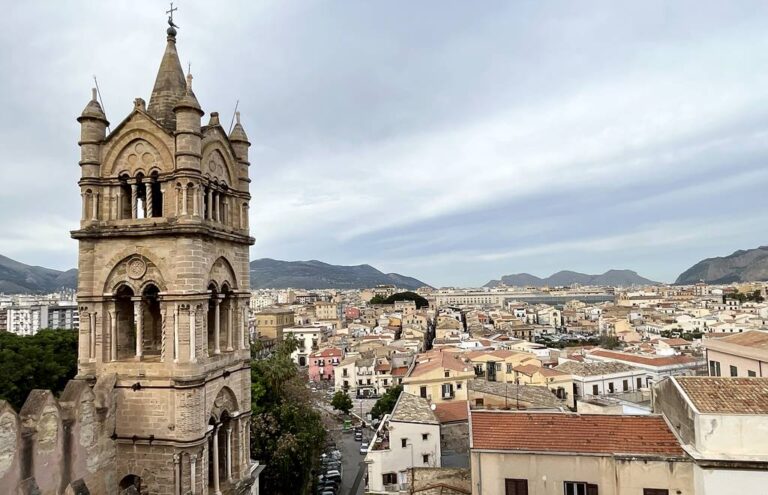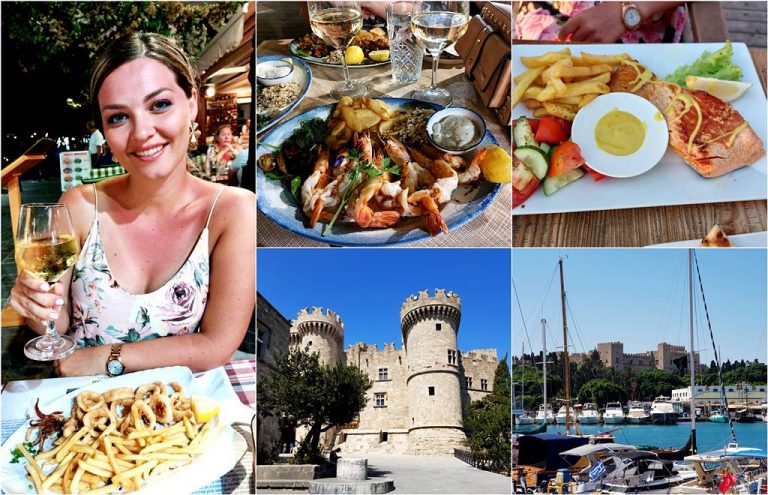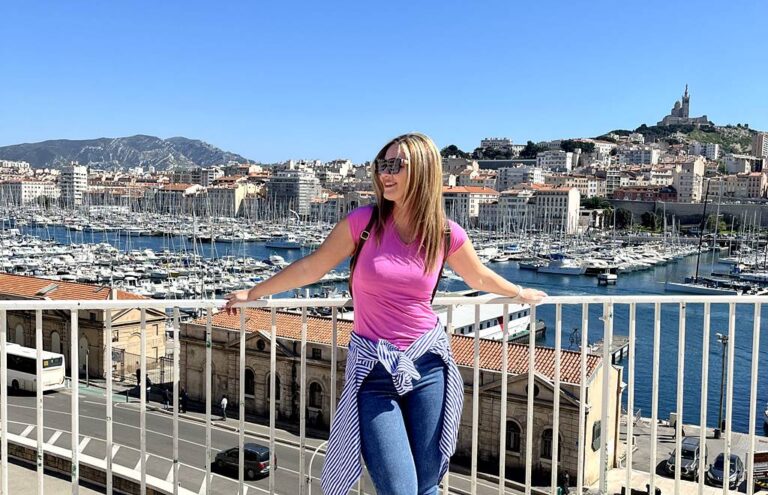Cartagena Cruise Port Guide (Spain): 7 Best Things to Do
Some links in this post are affiliate links. If you book through them, I may earn a small commission at no extra cost to you. Thanks for supporting my work!
As an Amazon Associate, I earn from qualifying purchases. Read my full disclosure here.
Cartagena, located on Spain’s southeastern coast in the Murcia region, is a port city full of history, impressive Roman ruins, and beautiful architecture. It’s a popular stop on many Western Mediterranean cruise itineraries — and it’s easy to see why.
I’ve visited Cartagena a couple of times on a cruise and always enjoyed the relaxed vibe, rich history, great shopping, and delicious food. It’s one of those places where you can do a lot without rushing.
The cruise terminal is conveniently located right by the Old Town, so you can step off the ship and start exploring on foot. In this guide, I’ll walk you through:
- Cartagena cruise port (where ships dock, how to get around)
- 7 best things to do in Cartagena on a cruise stop (including a day trip to Murcia)
Cartagena Cruise Port Overview
Cartagena cruise terminal is just a 5–10 minute walk from the city center and the main pedestrian street, Calle Mayor. The port typically accommodates one cruise ship at a time.
There’s no terminal building, but ships dock directly at the Cartagena Promenade (also known as the marina), where you’ll find a taxi rank, tourist information booth, and a large parking area for tour buses.
Taxis are usually available right at the pier and often offer affordable tours of Cartagena or nearby Murcia. For current prices and suggestions, check with the tourist information staff on-site.
To reach the city center, turn left after exiting the ship and walk along the tree-lined Muelle de Alfonso XII. In just a few minutes, you’ll arrive at Plaza Ayuntamiento, where Calle Mayor begins.
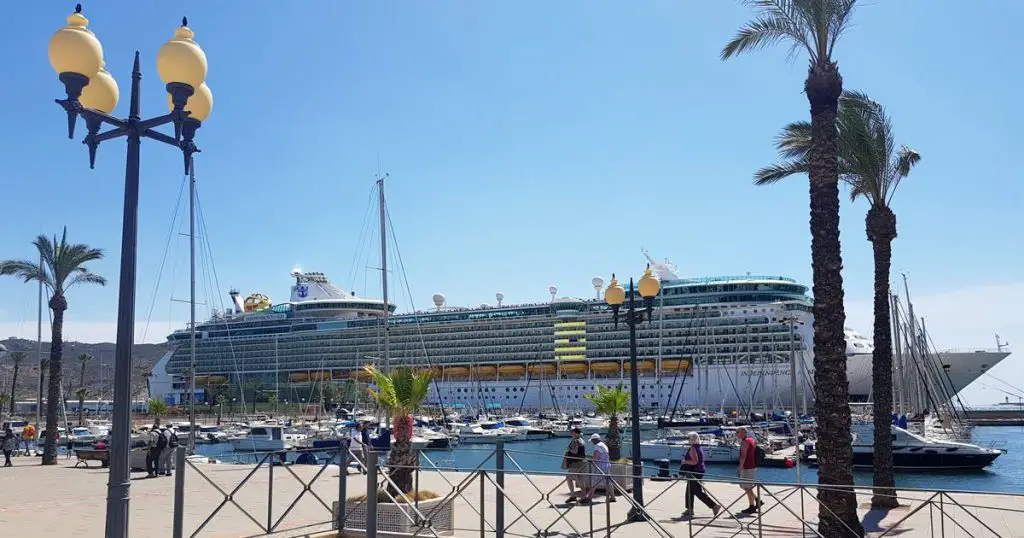
Cartagena Cruise Port: Practical Tips for Your Visit
♿ Accessibility in Cartagena
Cartagena Promenade, the marina area, and the main pedestrian street Calle Mayor are flat and wheelchair-friendly.
💶 Currency and ATMs
The currency in Spain is Euro (€). You’ll find exchange offices and ATMs throughout the city center.
🚍 Transportation Options from the Port
Taxis
Taxis are available right at the pier and often offer affordable tours of Cartagena and Murcia. Ask at the tourist info booth.
Public Buses
Bus stops are along Muelle de Alfonso XII, directly across from the cruise ship. Single ticket: €1.20. Check timetables here
Train Station
Cartagena train station is about a 20-minute walk from the port. Check schedules at RENFE
Tourist Bus
The Cartagena Tourist Bus runs every hour and is a great way to see both ancient and modern Cartagena. The stop is right across from the terminal.
📶 Wi-Fi in Cartagena
Enjoy free Wi-Fi at many cafes and restaurants along the promenade and in the city center.
🕰️ Siesta Time & Closures
- Most shops/pharmacies close daily from 1:30 PM to 4:00 PM
- Big stores stay open during cruise days
- Museums and landmarks are closed on Mondays
✈️ Nearest Airport
Región de Murcia International Airport is 32 km (20 miles) away — about a 25-minute drive.
✅ Book a private transfer to/from Cartagena Cruise Port
Planning Beyond the Port
🏙️ Day Trip to Murcia
Murcia, the capital of the region, is located about 56 km (35 miles) or a 45-minute drive from Cartagena and is one of the most popular shore excursion destinations.
If you want to explore at your own pace, consider renting a car directly from Cartagena — it’s a great option if you’re traveling with family or planning a DIY trip.
✅ Check car rental prices in Cartagena
Prefer a guided experience? There are plenty of organized tours that take you through the highlights of Murcia and Cartagena’s surrounding areas:
✅ Book Cartagena & Murcia excursions
✅ Check out all Cartagena tours and excursions on Viator and Get Your Guide
✅ Search Cartagena hotels for pre- or post-cruise stays
📘 Planning a Mediterranean cruise?
Don’t miss my Mediterranean Cruise Port Guide ebook — packed with insider tips, maps, and must-do experiences across 45 ports, including Cartagena!
👉 Grab your copy here
7 Best Things to Do in Cartagena Cruise Port
🚶♀️ Explore Calle Mayor – Cartagena’s Pedestrian Heart
Calle Mayor is the city’s main pedestrian street and the first place you’ll see after walking from the port. It’s lined with shops, restaurants, cafés, and bars — perfect for strolling, shopping, or grabbing a bite.
In this area, you’ll also find practical essentials like banks, pharmacies, ATMs, exchange offices, supermarkets, and a few hotels.
It’s also a great starting point to visit some of Cartagena’s most iconic landmarks, including:
- Parque Arqueológico Cerro del Molinete
- Roman Theatre & Museum
- Old Cathedral of Cartagena (Catedral de Santa María la Mayor)
- Iglesia Castrense de Santo Domingo
- Foro Romano
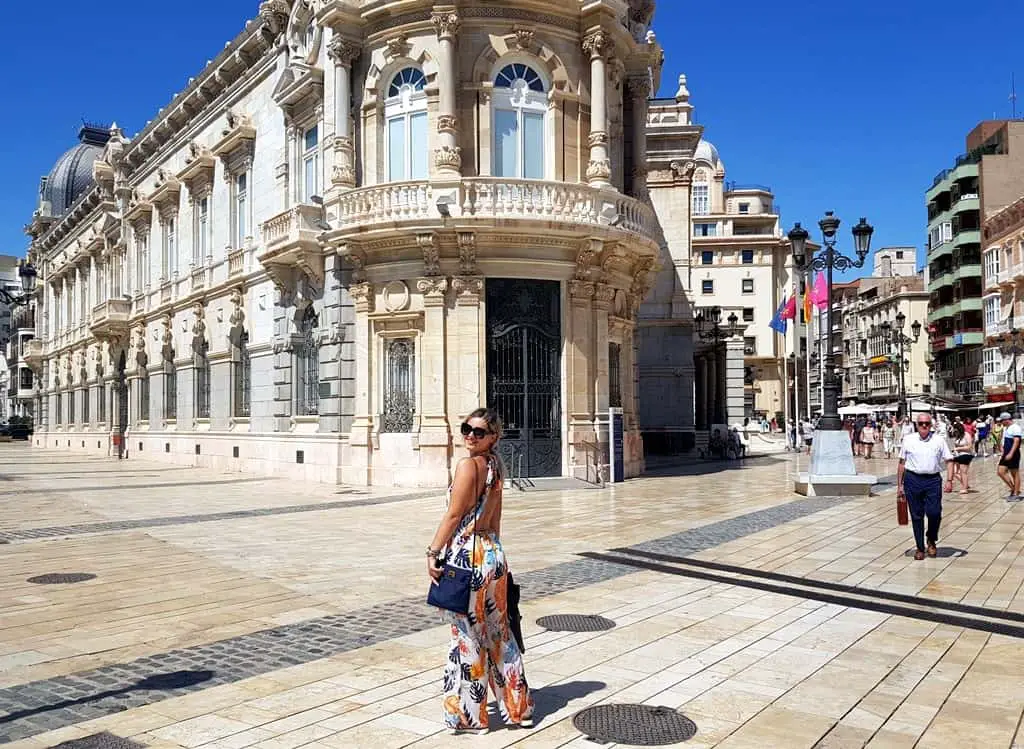
If you keep walking straight from Calle Mayor, you’ll come across several charming squares surrounded by shops and local tapas bars, perfect for a relaxed coffee, lunch, or a drink at very affordable prices.
Some of my favorites include:
- Plaza de San Sebastián
- Plaza Icue
- Plaza de España – a larger square with a beautiful park and playground located in the middle of a roundabout
One thing I love about Cartagena is that everything is within walking distance from the dock — most of the main attractions are easy to reach on foot.
That said, a few spots are located uphill, so keep that in mind when booking a shore excursion or heading out on your own.
🛒 Shopping tip: Cartagena is one of my favorite ports for shopping. The selection is excellent, and the prices are even better. Check out local Spanish brands and fashion boutiques in Calle Mayor and the nearby streets — you might find some great deals!
🏛️ Palacio Consistorial (Cartagena City Hall)
Built in the early 20th century in an eclectic architectural style, the Palacio Consistorial de Cartagena houses the City Hall and dominates Plaza del Ayuntamiento, one of the city’s central squares.
While it’s the official seat of the Council of Cartagena, most administrative offices are located in a different building.
The structure itself is triangular (as seen in the photo above) and features ornate details and extravagant decoration, both outside and inside. The interior includes two beautifully decorated exhibition halls used for official events, concerts, and public functions.
✅ Guided tours are available if you’d like to visit the building and explore its stunning interior.
🎭 Roman Theater of Cartagena (Teatro Romano)
The Roman Theater of Cartagena (Teatro Romano) is one of the city’s most iconic landmarks, dating back to the 1st century BC. It was built under Emperor Augustus and dedicated to his grandsons, Gaius and Lucius Caesar.
Tucked at the foot of the hill crowned by Concepción Castle, the theater is best viewed from above — but it’s well worth visiting up close too.
It once held 7,000 spectators and has been beautifully restored, complete with a modern museum showcasing archaeological finds and the site’s history.
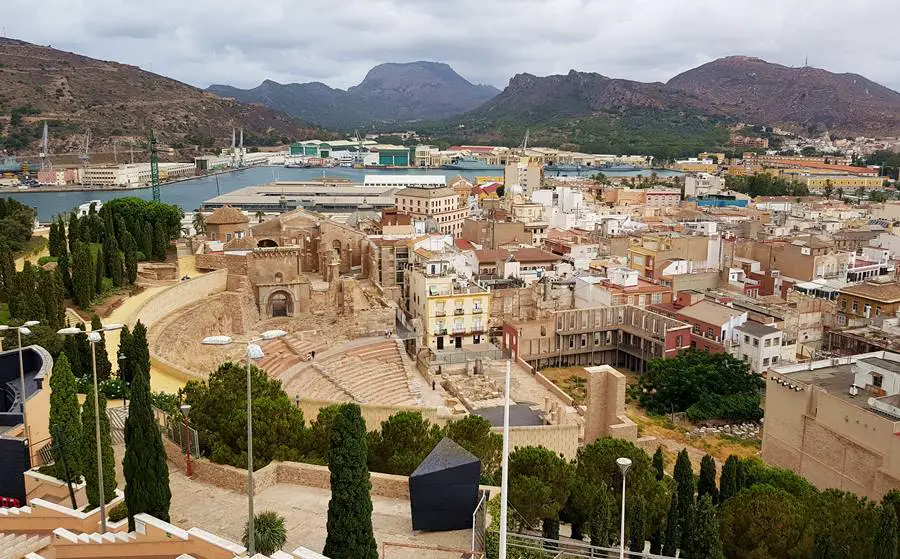
An interesting fact: the Old Cathedral of Cartagena was built over the upper seating section (cavea) in the 13th century, and the ruins of both structures now form a truly unique architectural site.
- Entrance is at Plaza Ayuntamiento, right by the start of Calle Mayor
- The museum and theater are partially wheelchair accessible
- Expect lines at the entrance, especially on busy cruise days
🏰 Concepción Castle (Castillo de la Concepción)
Perched on a hill overlooking the port, Concepción Castle is one of Cartagena’s most recognizable landmarks. It’s located in the heart of Parque Torres and offers one of the best panoramic views of the city — a perfect spot to soak in Cartagena’s 3,000-year-old history.
The castle was built in the 13th century on the site of a former Alcazaba, a Muslim palace fortress, after the city was reconquered by King Alfonso X of Castile. It served as a defensive structure until the late 18th century, when it lost its strategic role.
In the early 20th century, the area was transformed into a public park. Today, the castle houses a small museum that tells the story of Cartagena’s past — and it can be visited for a small entrance fee.
🗺️ Tip: The view from the top also gives you a stunning look at the Roman Theater below.
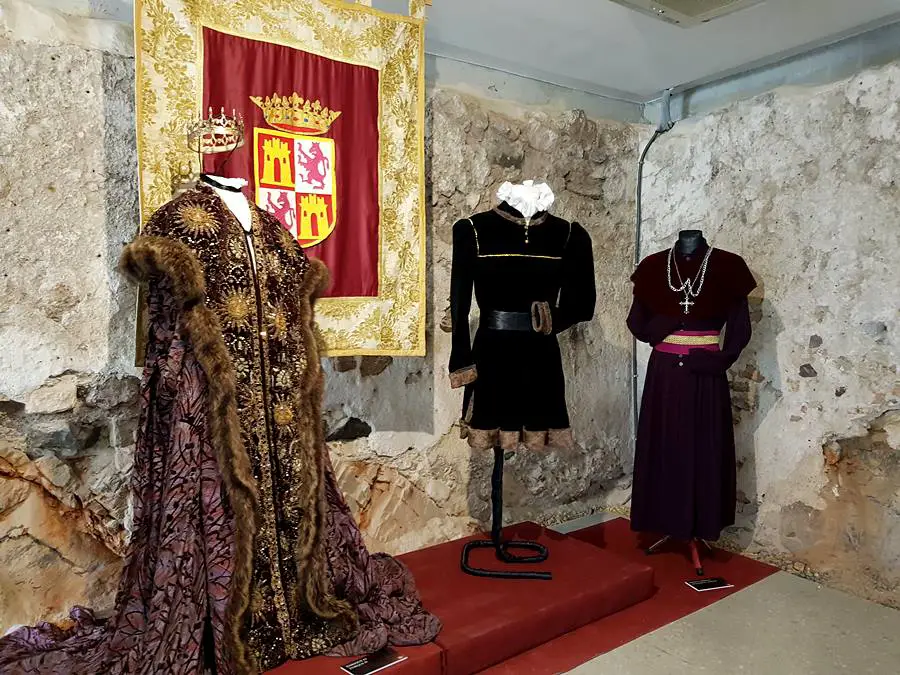
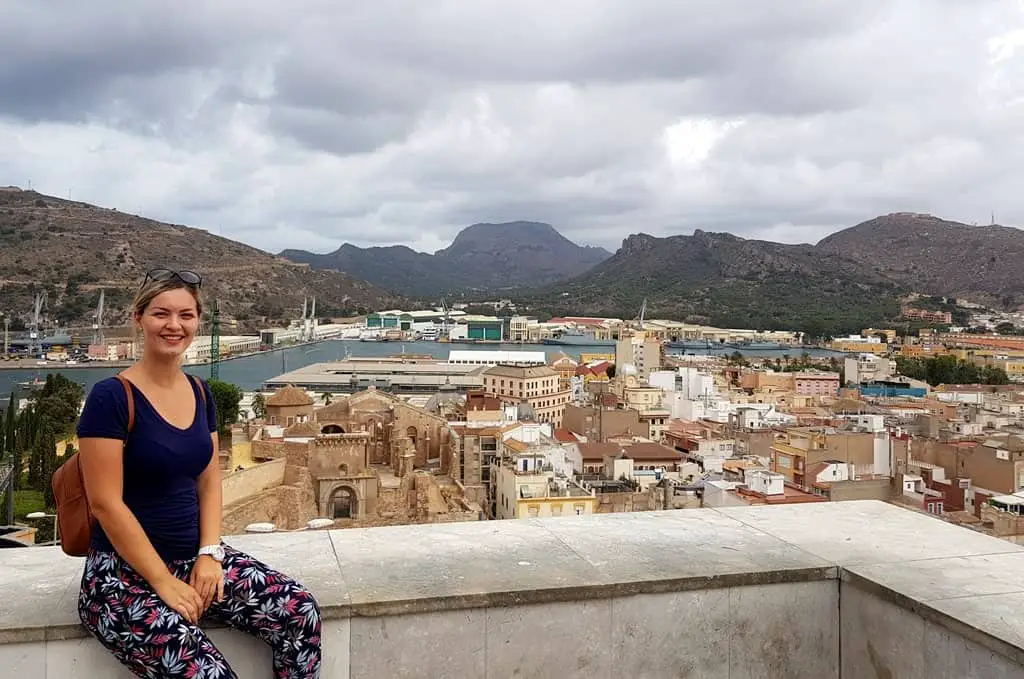
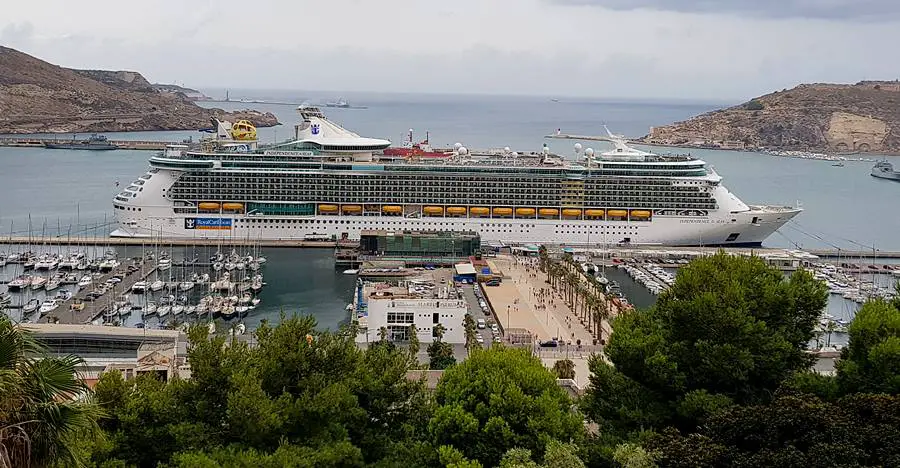
The Concepción Castle is small but worth visiting for its history, museum, and views — and you can easily explore it in about an hour.
There’s a well-maintained road leading up the hill, but vehicles can only go so far — the final stretch to the entrance must be done on foot (around a 10-minute walk).
If you’re walking from the port, expect an uphill walk of around 15 minutes.
A panoramic elevator may be available on Calle Gisbert, which is the most convenient option for wheelchair users — check availability with the tourist info booth on the pier. The castle entrance is wheelchair-accessible.
🧱 Punic Wall Interpretation Center
Cartagena was founded back in the 3rd century BC by the Carthaginian general Hasdrubal the Fair, right on the site of its natural harbor. For centuries, it remained one of Spain’s most important naval ports.
To dive deeper into Cartagena’s ancient past, I recommend visiting the Punic Wall Interpretation Center, a modern, multimedia space built around the remains of the city’s 2,200-year-old defensive wall.
This wall was part of Cartagena’s fortification during the Second Punic War, but it ultimately couldn’t hold off the Roman conquest.
The site gives you a fascinating look into the city’s early history and offers an immersive experience through videos, exhibits, and preserved ruins of the Muralla Púnica de Cartagena.
- It’s located about 1.2 km (0.75 miles) from the port — around a 15-minute walk or 5-minute taxi ride.
- The center is wheelchair-accessible, and accessible restrooms are available.
👉 Explore Punic Wall tours and tickets
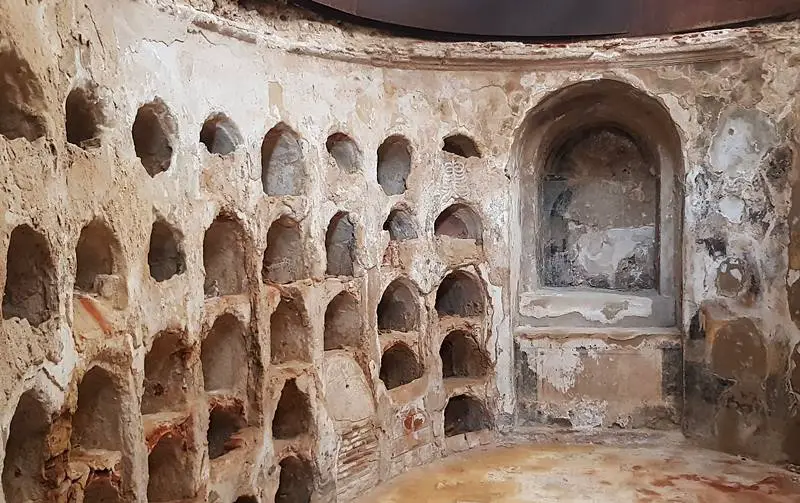
🌊 National Museum of Underwater Archaeology (ARQVA)
Located right at the Yacht Port Cartagena, this impressive museum is just a 5-minute walk from the cruise dock.
When you exit the ship, turn right and you’ll spot two modern buildings with sleek architecture designed to evoke an underwater feel.
This is the first museum in Spain dedicated to underwater archaeology, and it’s one of the most unique attractions in the city.
Inside, you’ll find fascinating exhibits on ancient shipwrecks, fossils, and artifacts from the Mediterranean’s rich maritime history — including tools, trade goods, and remains of historic vessels.
After exploring, head to the top-floor restaurant or café for a drink or lunch with great views of the harbor.
The museum is fully wheelchair-accessible and easy to navigate.
🏙️ Day Trip to Murcia
A visit to Murcia, the capital of the region, is one of the most popular shore excursions from the port of Cartagena — and it’s easy to see why.
Nestled along the Segura River, Murcia was founded in the 9th century and is known today as a lively university town with a laid-back vibe and a rich mix of culture, history, and great food.
The city’s highlight is the Cathedral of Murcia, a stunning 14th-century landmark that blends Gothic, Renaissance, and Spanish Baroque styles.
It overlooks the elegant Plaza del Cardenal Belluga, also home to the colorful Episcopal Palace of Murcia, built in the 18th century.
You can spend a few relaxed hours wandering through Murcia’s historic old streets, enjoying local landmarks, and stopping for tapas and sangria at one of the many local bars scattered across the center.
- Murcia is located about 56 km (35 miles) or a 45-minute drive from Cartagena cruise port.
- There are also regular trains from Cartagena station to Murcia del Carmen station, with a journey time of around 50 minutes.
- Check train schedules here
👉 Check out Cartagena to Murcia shore excursions
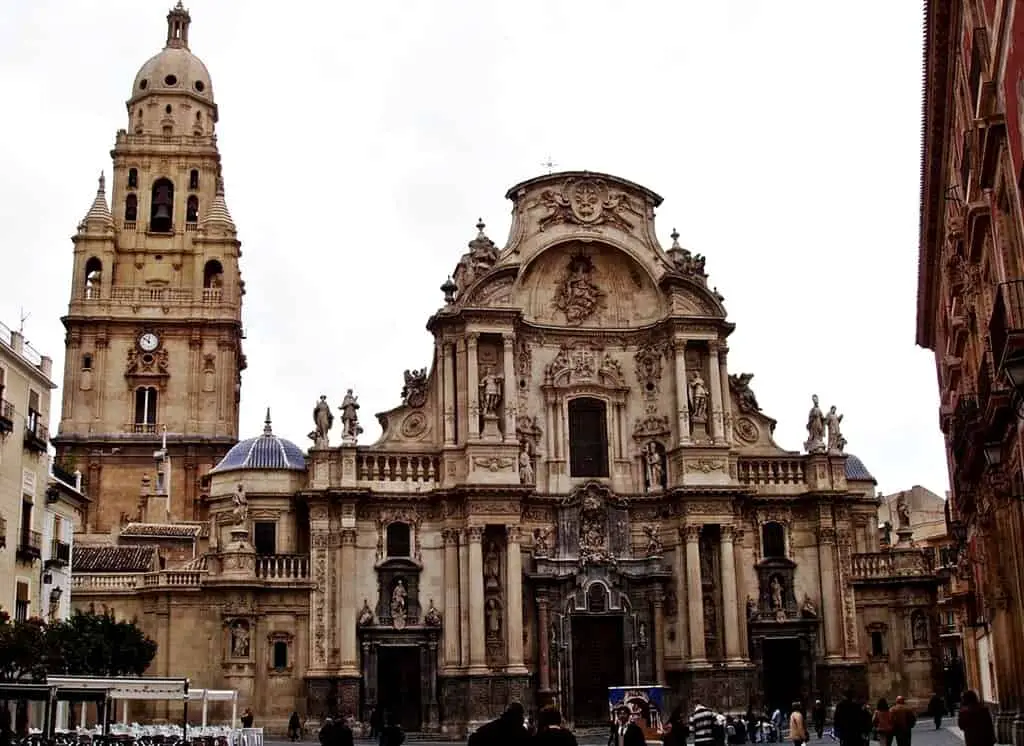
FAQ – Cartagena Cruise Port, Spain
❓ Where do cruise ships dock in Cartagena, Spain?
Cruise ships dock at Cartagena’s main cruise terminal, located right next to the Cartagena Promenade (Muelle Alfonso XII). There’s no tendering — the ship pulls up directly to the dock, so you can walk off and be in the city within minutes.
❓ Can you walk to the city center from the cruise port?
Yes, and that’s one of the best things about this port. The Old Town and main pedestrian street, Calle Mayor, are just a 5–10 minute walk from the ship. The area is flat, well-paved, and easy to explore on foot.
❓ Is there public transport or shuttle service at the port?
There’s no shuttle needed, as everything is close by. However, you’ll find taxis waiting at the pier and public bus stops right along the promenade (Muelle Alfonso XII). A single bus ticket costs around €1.20 if you want to go beyond the Old Town.
❓ Is Cartagena cruise port wheelchair accessible?
Yes — the cruise terminal, marina, Calle Mayor, and most museums (like the Roman Theater and ARQVA) are wheelchair-friendly. If you’re planning to visit Concepción Castle, there’s a panoramic elevator on Calle Gisbert that helps avoid the steep hill, but it’s always good to check with the tourist booth near the ship for availability.
❓ How much time do I need to explore Cartagena on a cruise stop?
You can see a lot in just 3 to 4 hours, but if you enjoy history, shopping, or want to try the local tapas, I recommend spending a full day. Most cruise visitors can comfortably explore the city on foot, including several museums and landmarks.
❓ What currency is used in Cartagena, Spain?
Cartagena uses the Euro (€). You’ll find ATMs, banks, and exchange offices near the port and in the Old Town. Credit cards are accepted almost everywhere — from shops and restaurants to museums.
❓ Are there any shore excursions from Cartagena?
Yes, absolutely. Many cruise passengers book tours to Murcia, the capital of the region, or explore nearby spots like Cala Cortina beach or La Manga del Mar Menor. Whether you’re after history, nature, or just a scenic drive, there are plenty of options.
Helpful Resources for Your Cruise
🌐 Helpful Websites for Cartagena Cruise Port
- Find Cartagena cruise port on Google Maps
- Cartagena Cruise Ship Schedule
- Cartagena Port Authority
- Cartagena Tourism Office
- Local Weather Forecast
- Official Cartagena Tourism Site
⚓ Other Ports Often Included in Your Itinerary
The Port of Cartagena is a popular stop on many Western Mediterranean and Atlantic cruise itineraries. Here are some other ports you might visit on the same route:
- Civitavecchia (Rome) – Explore the Colosseum, Vatican City & more
- Valencia – Home to the futuristic City of Arts and Sciences
- Málaga – Known for its historic castles, museums, and beaches
- Gibraltar – Panoramic views from the iconic Rock
- Madeira (Funchal) – Lush scenery and dramatic coastline
- La Coruña – Northern Spain’s gateway to Santiago de Compostela
- Bilbao – Cultural hub with the famous Guggenheim Museum
- Barcelona – A major homeport, rich in architecture and nightlife
- Cádiz – Gateway to Seville and sunny Andalusia
- Lisbon – Hilltop views, tram rides, and vibrant neighborhoods
- Palma de Mallorca – Gothic cathedral, beaches, and island escapes
You may also like our cruise port guides to the Mediterranean, Caribbean, Northern Europe, USA & Canada, Middle East, Australia & New Zealand
Adventour Begins contains affiliate links. If you make a purchase through these links, we may earn a commission at no additional cost to you. For more details, please see our Disclosure Policy


